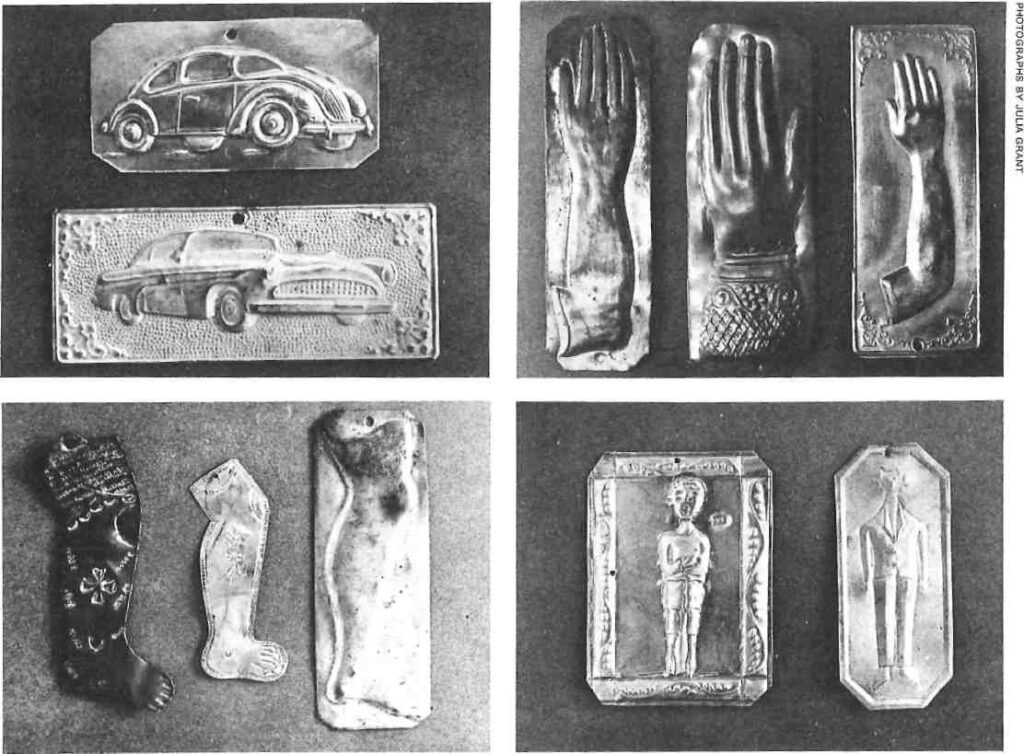A Custom From Ancient Times
Perhaps the votive offerings most of ten encountered by visitors to Greece are the ubiquitous altars that dot the roadsides and appear in particular profusion on treacherous curves. These miniature edifices, ranging from the simple to the ornate, balanced precariously on spindly legs, usually mark a spot where an accident occurred but serious in jury or fatality was avoided. Libations of olive oil, or oil lamps to be lit on holy days, are often visible behind the tiny doors and windows of the altars. Oblations expressing gratitude, offering supplication or seeking intervention by the saints, are called “tamata” (“tama” in the singular). In recent years a particular type of tama, the small metal plaques hung on the iconostasis and icons of Orthodox churches, have become popular among collectors.








